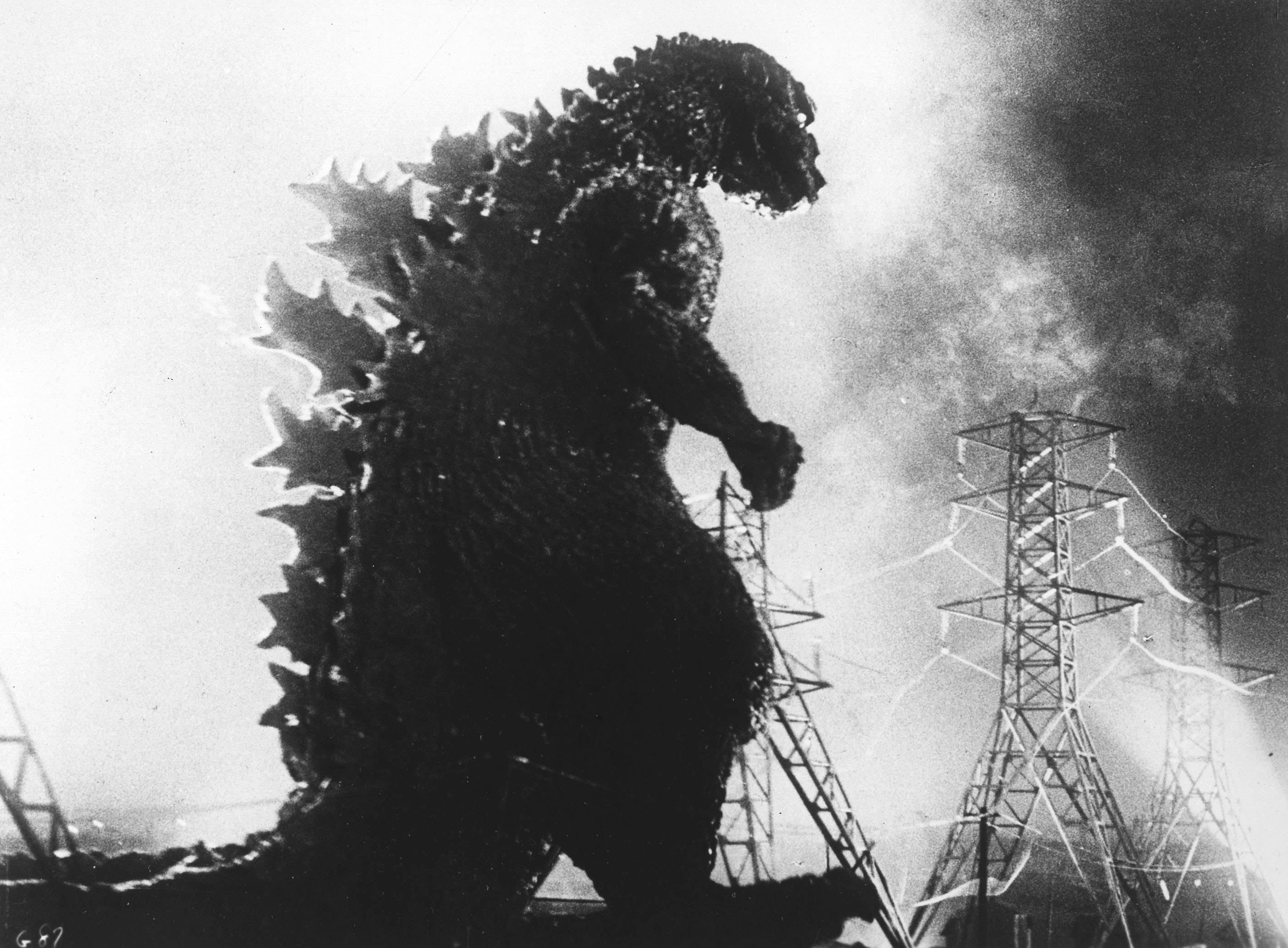The film tells the story of Haruo Sakaki (Chris Niosi), a young man who lost his parents to an attack by the monster Godzilla as a child. He lives on-board a spaceship with a colony that escaped the destruction that monsters brought to the Earth. However, refusing to give up hope on humanity’s true home, Haruo, with the help of an alien priest named Metphies (Lucien Dodge) and a group of his childhood friends, vows to reclaim the planet and defeat his childhood nightmare. Thus, the colony mobilizes on the now-forested Japan where Godzilla continues to roam, along with other monsters that lurk in the shadows and in the depths of the earth.
|
Godzilla: Planet of the Monsters (Seshita and Shizuno, 2017), while it falters in character development, is a fairly entertaining film with an intriguing premise, theme, and an ambitious animation style. The film tells the story of Haruo Sakaki (Chris Niosi), a young man who lost his parents to an attack by the monster Godzilla as a child. He lives on-board a spaceship with a colony that escaped the destruction that monsters brought to the Earth. However, refusing to give up hope on humanity’s true home, Haruo, with the help of an alien priest named Metphies (Lucien Dodge) and a group of his childhood friends, vows to reclaim the planet and defeat his childhood nightmare. Thus, the colony mobilizes on the now-forested Japan where Godzilla continues to roam, along with other monsters that lurk in the shadows and in the depths of the earth. Planet of the Monsters crafts a version of Godzilla that emphasizes the monster as an indomitable force of nature beyond humankind’s control. The Godzilla of this film is the evolution of plant-life on Earth that evolved and adapted via natural selection and took over the planet. Meanwhile, Godzilla’s first incarnation in Gojira (Honda, 1954) depicted it as an allegory for the World War II nuclear attacks on Hiroshima and Nagasaki. It breathed atomic gas and set fire to Tokyo during its reign of terror, representing the horrors that human’s own invention brought on itself. However, Planet of the Monsters continues to expand the discussion on humans and their relationship with nature and technology by putting a twist on Godzilla’s origins. As Godzilla is a sentient collective of evolved plant-life, it represents the notion that humanity has abused an ecosystem that is not their own, and nature will find ways to take it back. Even though Haruo and his team make great strides in fighting off the monsters, they have yet to see the true extent of nature’s full power in rejecting humankind’s technology and civilization. Unlike many other Japanese anime, this film was created using three-dimensional models and environments as opposed to the conventional two-dimensional style. 3D models can have jarringly low frame rates, making characters appear stiff and move in an awkward, choppy fashion. Such has been the case for animated shows such as Knights of Sidonia, a Netflix exclusive, and the 2016 adaptation of the manga Berserk. While the frames do appear slightly choppy, the lighting, textures, and overall designs of the colony’s mechs and the monsters make up for it. The 3D animation especially helps with the appearances of the monsters on Earth. Godzilla and the rest of the creatures have very rocky, earthen, and almost alien-like textures, making them appear all the more terrifying and strange. This look would not have been achieved as well had it been rendered in 2D. The major fault that holds this movie down is its underdeveloped cast of characters aside from the protagonist. While Haruo has a very clear arc, in which he goes from a rash, rage-filled upstart to a responsible and driven leader, the supporting cast does not have much development. There are the building blocks for development set in place with characters such as Yuko Tani (Cristina Vee), the granddaughter of a man who died trying to colonize another planet at the beginning of the film. Metphies also serves as the film’s voice of reason, who sees beyond humanity’s arrogance and desire for control, and furthers the themes of nature taking back what humans have claimed as their own. However, the film mostly focuses on Haruo’s personal growth and unyielding desire to fight Godzilla, leaving most of the other characters without much depth. As this film is the first of a trilogy that Toho Animation plans to release within the next three years, perhaps the rest of the cast is left intentionally undeveloped for now. Planet of the Monsters ought to complete its character's personalities and tie up most of its loose ends, even if it is only the first of three more films. Overall, Godzilla: Planet of the Monsters is far from a ground-breaking experience, lacking substantial character development, but it offers some insightful commentary on the arrogance of humankind, has a solid, visually-pleasing art style, and promises even more revelations and developments for its sequel.
Comments are closed.
|
Archives
April 2024
|






 RSS Feed
RSS Feed
